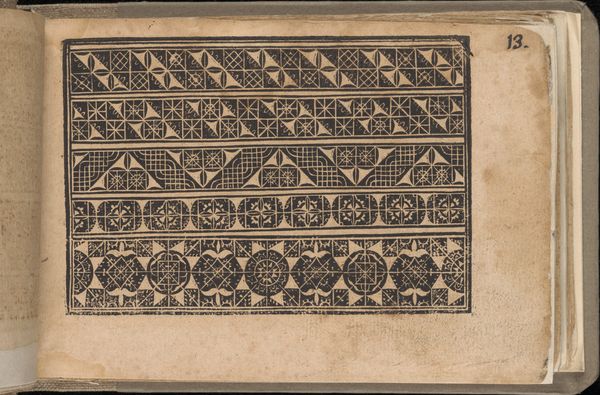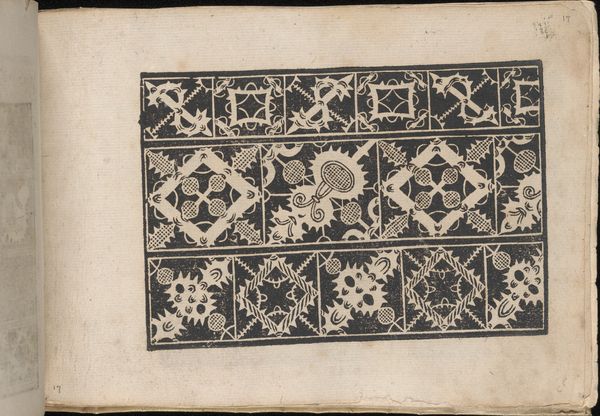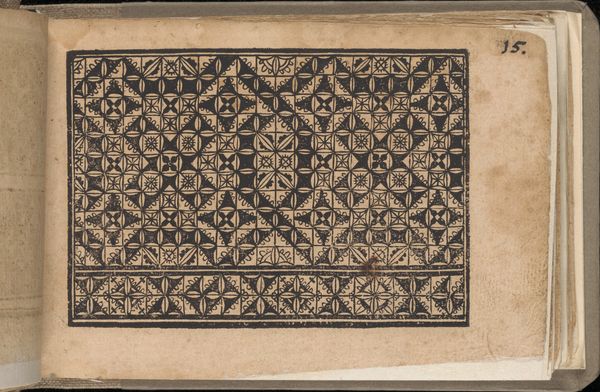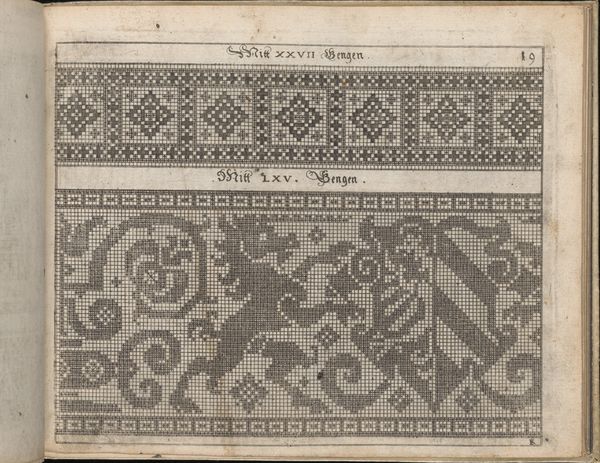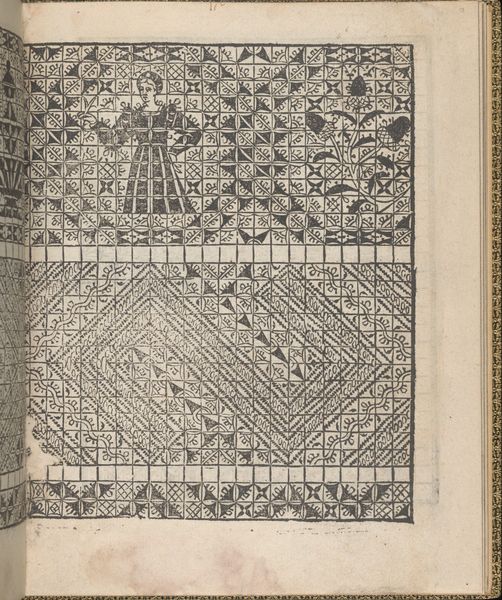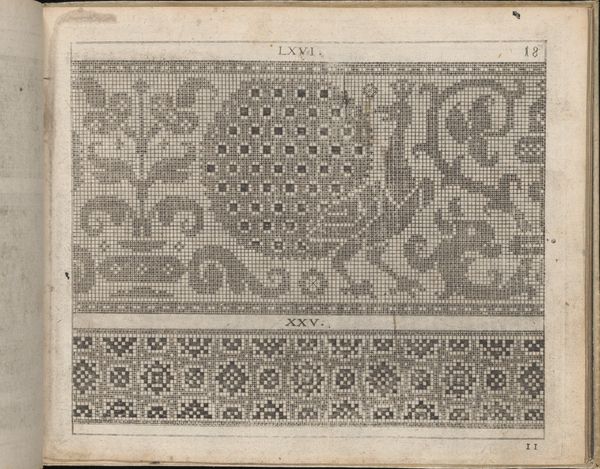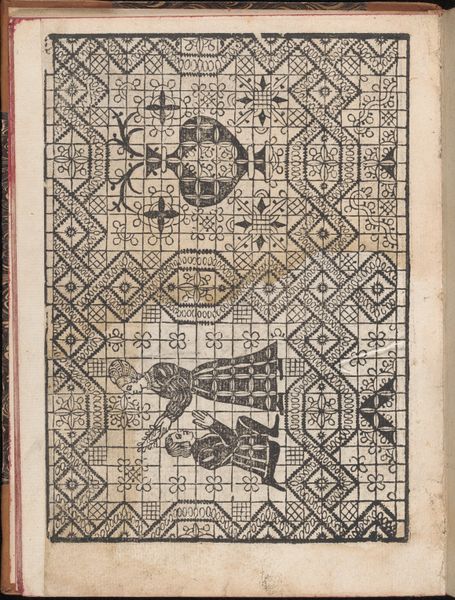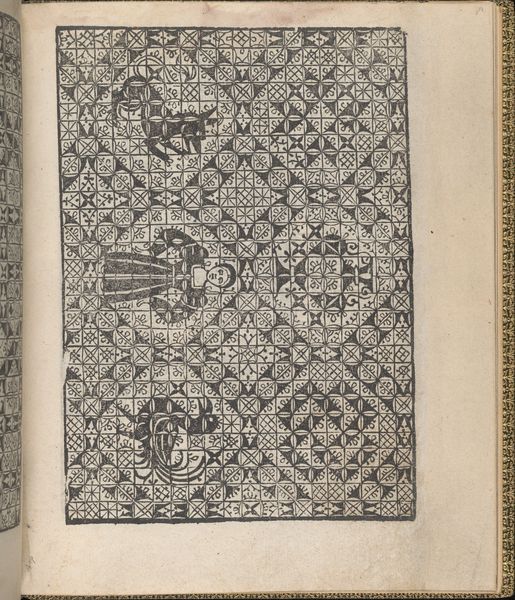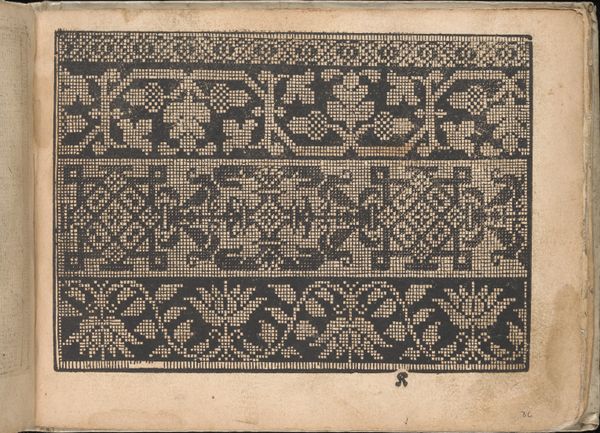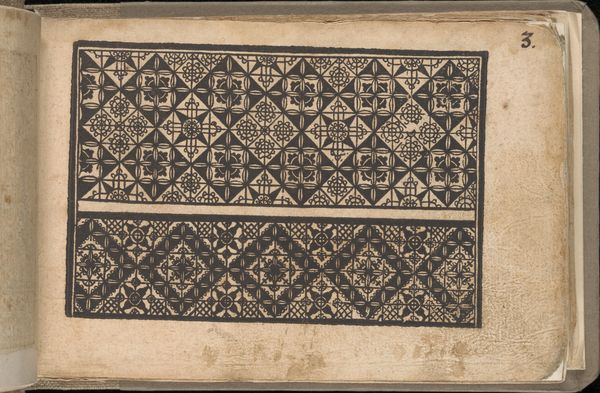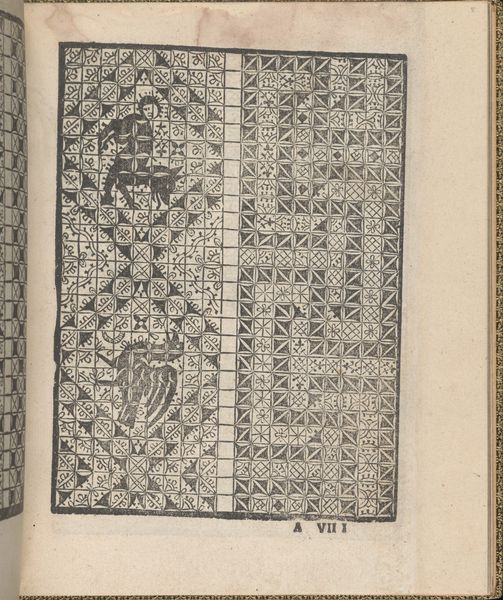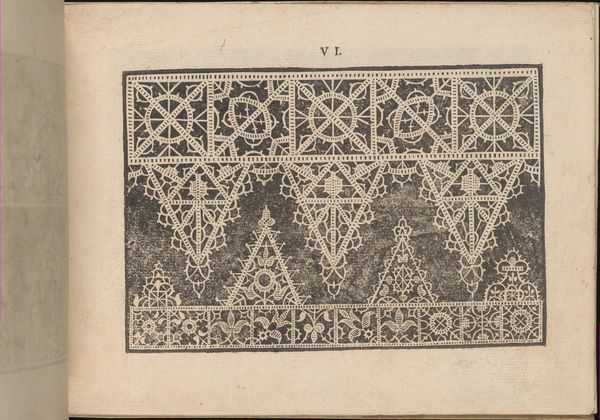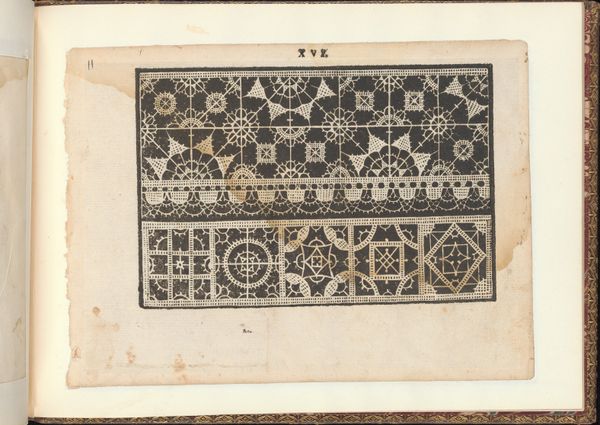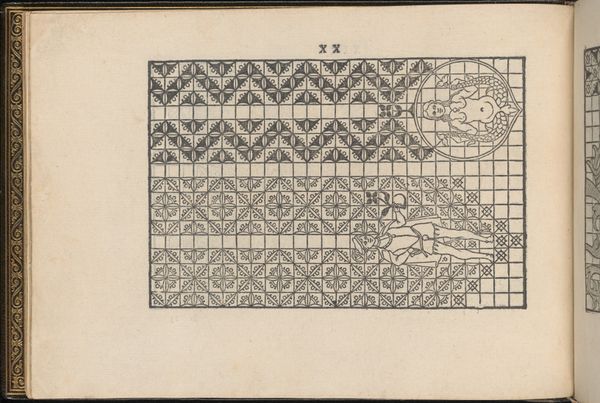
drawing, print, woodcut
#
drawing
#
medieval
# print
#
figuration
#
woodcut
#
line
Dimensions: Overall: 4 1/2 x 6 11/16 in. (11.5 x 17 cm)
Copyright: Public Domain
Editor: Here we have page 9r from “Schön newes Modelbuch” created in 1608, made by Sigismundus Latomus. It looks like a woodcut print of two figures, a man and a woman, against this dizzying geometric backdrop. There's a sort of flatness to the scene and something about their stylized clothing that strikes me. What do you see in this piece? Curator: Well, instantly I'm drawn to how this image, meant as a model for needlework, reflects the rigid social structures of its time. Look at the patterns – they are repetitive and ordered. The figures, framed by these precise geometric shapes, suggest a world where order and decorum reign supreme. Think about the cultural memory embedded in textiles. These aren't just clothes, they’re statements. Editor: That’s fascinating! It really does feel meticulously planned out. Do the clothes hold specific significance beyond just representing social status? Curator: Absolutely. The specific details within their attire signal more than wealth, they whisper lineage, trade connections, and even marital status. Consider that these pattern books, although practical, served as cultural carriers. Visual symbols woven into clothing operated as a sort of cultural encoding, easily readable by contemporary viewers, even carrying emotional and psychological weight. Does this give you a different sense of the composition? Editor: It really does. Knowing it's a model book for needlework shifts the perspective. The rigid patterns and the formality almost suggest an instruction manual for social presentation, not just clothing. Curator: Precisely. The clothes *make* the man, or in this case, both man and woman in society's eye. These textiles reflect the cultural memory of the time and were signifiers for continuity and stability. Editor: This has really made me rethink what I originally perceived as just a decorative print. Curator: Exactly. By examining these embedded symbols, we reveal the psychological landscape of the 17th century. I learned a bit more today too!
Comments
No comments
Be the first to comment and join the conversation on the ultimate creative platform.
